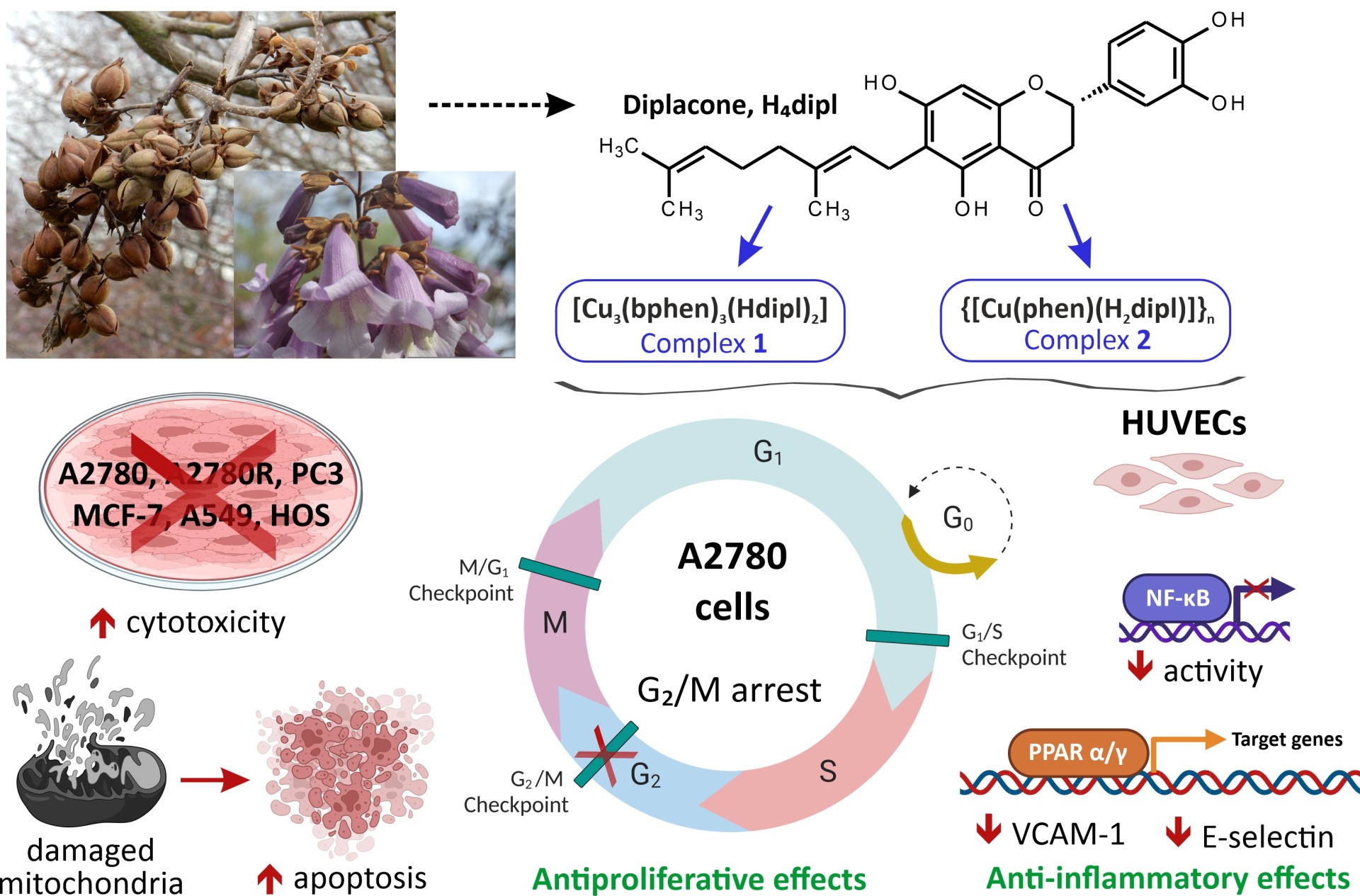Publikace v časopise Journal of Inorganic Biochemistry
C-Geranylated flavanone diplacone enhances in vitro antiproliferative and anti-inflammatory effects in its copper(II) complexes
Authors: Zdeněk Trávníček, Ján Vančo, Jan Belza, Giorgio Zoppellaro, Zdeněk Dvořák, Barbora Beláková, Johannes A. Schmid, Lenka Molčanová, Karel Šmejkal
Full-text: https://doi.org/10.1016/j.jinorgbio.2024.112639
Two copper(II) complexes containing diplacone (H4dipl), a naturally occurring C-geranylated flavanone derivative, in combination with bathophenanthroline (bphen) or 1,10-phenanthroline (phen) with the composition [Cu3(bphen)3(Hdipl)2]⋅2H2O (1) and {[Cu(phen)(H2dipl)2]⋅1.25H2O}n (2) were prepared and characterized. As compared to diplacone, the complexes enhanced in vitro cytotoxicity against A2780 and A2780R human ovarian cancer cells (IC50 ≈ 0.4–1.2 μM), human lung carcinoma (A549, with IC50 ≈ 2 μM) and osteosarcoma (HOS, with IC50 ≈ 3 μM). Cellular effects of the complexes in A2780 cells were studied using flow cytometry, covering studies concerning cell-cycle arrest, induction of cell death and autophagy and induction of intracellular ROS/ superoxide production. These results uncovered a possible mechanism of action characterized by the G2/M cell cycle arrest. The studies on human endothelial cells revealed that complexes 1 and 2, as well as their parental compound diplacone, do possess anti-inflammatory activity in terms of NF-κB inhibition. As for the effects on PPARα and/or PPARγ, complex 2 reduced the expression of leukocyte adhesion molecules VCAM-1 and E-selectin suggesting its dual anti-inflammatory capacity. A wide variety of Cu-containing coordination species and free by mass spectrometry studies in water-containing media, which might be or multimodal effect of the complexes.



